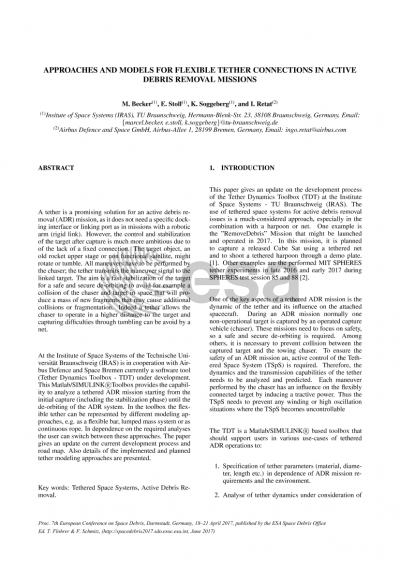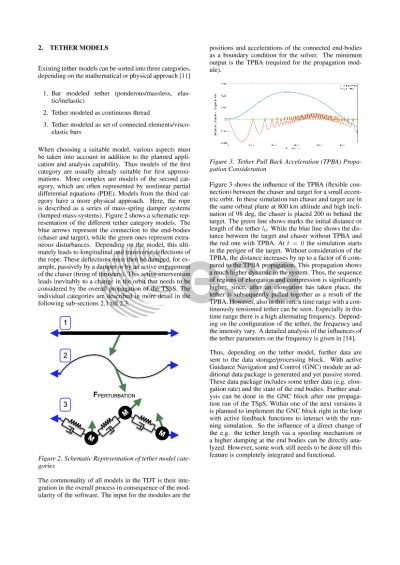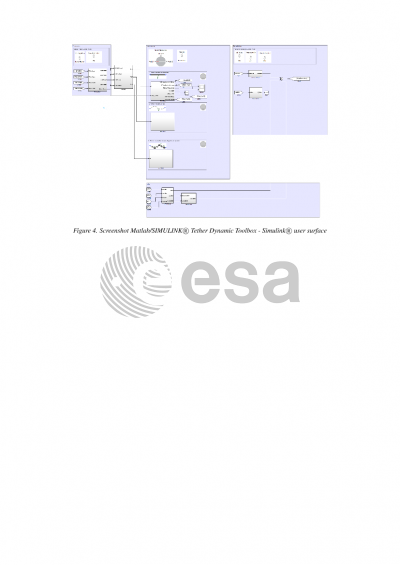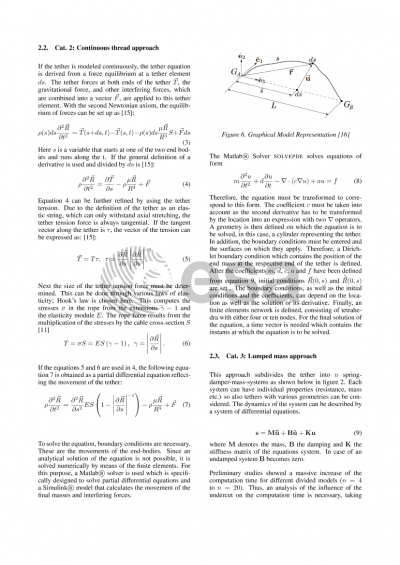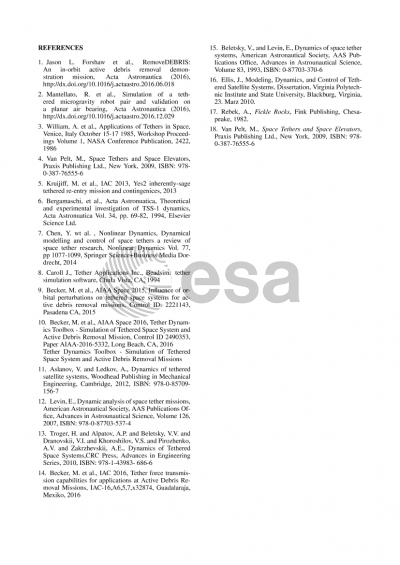Document details
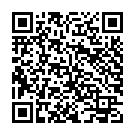
Abstract
The necessity of the removal of inactive spacecraft (especially large and heavy ones) has been proven for more than 20 years. In several studies many different concepts have been developed. Most of the concepts, with exception of ground-based ones, can be divided into concepts with a flexible or rigid link between the chaser (capture/service satellite) and the target (inactive spacecraft). A flexible link is a promising solution for an active debris removal (ADR) mission, as it does not need a specific docking interface or linking port as in missions with a rigid link. But the control and stabilisation of the target after capture is much more ambitious. The target object, an old rocket upper stage or non-functional satellite, might rotate or tumble. All manoeuvres have to be performed by the chaser; the tether transmits the manoeuvre to the linked target. The aim is a fast stabilisation of the target for a safe and secure de-orbiting to avoid for example a collision of the chaser and target in space that will produce a mass of new fragments that may cause additional collisions or fragmentations.
At the Institute of Space Systems of the university in Brunswick (IRAS) is currently a software tool (Tether Dynamics Toolbox - TDT) under development. The Toolbox pro- vides the capability to analyse a tethered ADR mission starting from the initial capture until the re-entry of the ADR system. In the toolbox the flexible tether can be represented by different modelling approaches, e.g. as a flexible bar, lumped mass system or as continuous rope.
In dependence on the required analyses the user can switch between these approaches. The paper presents the absolute differences of the results by using di- verse tether models. For this purpose sample missions were defined and evaluated. Also a comparison between different tether configurations (materials) is considered.
Preview
